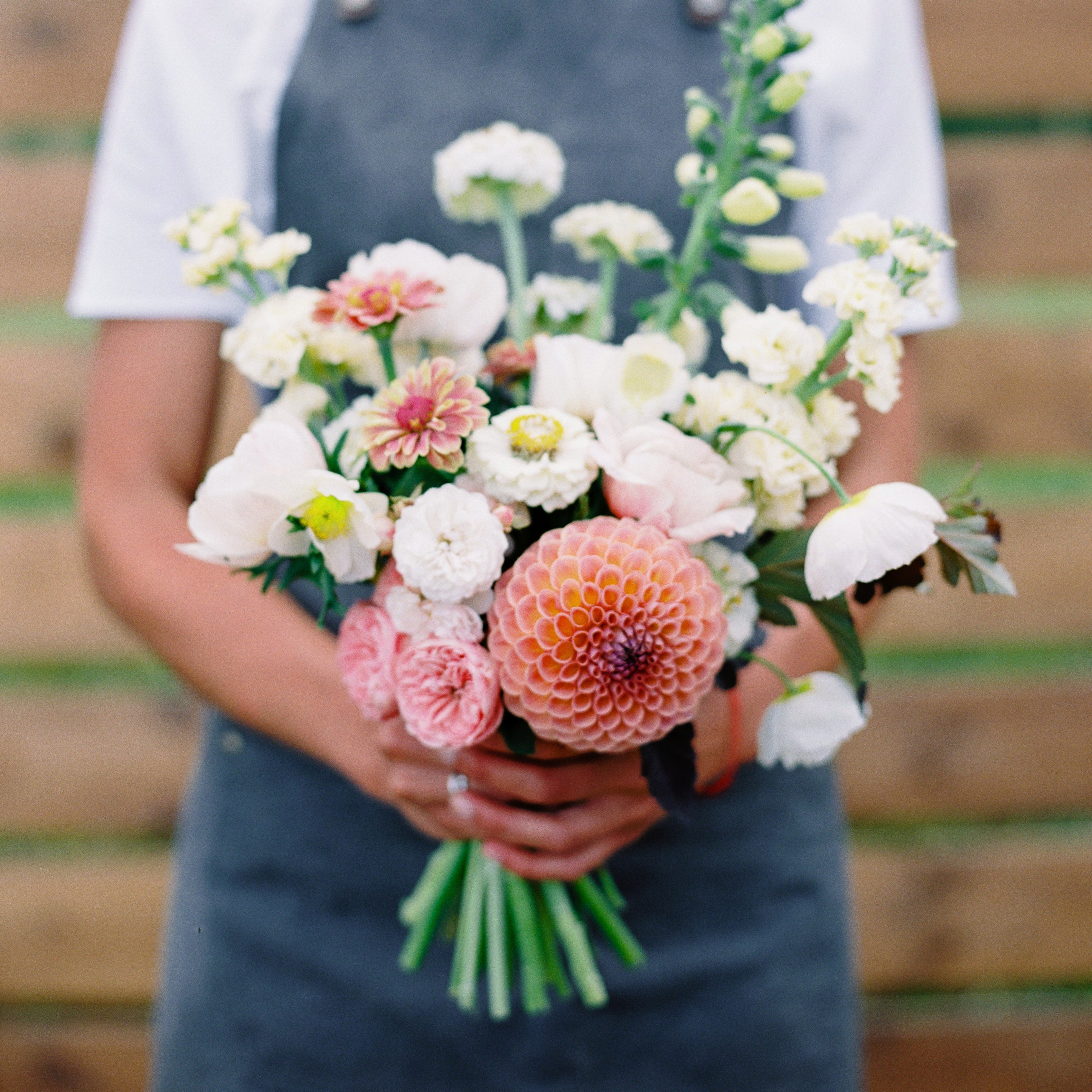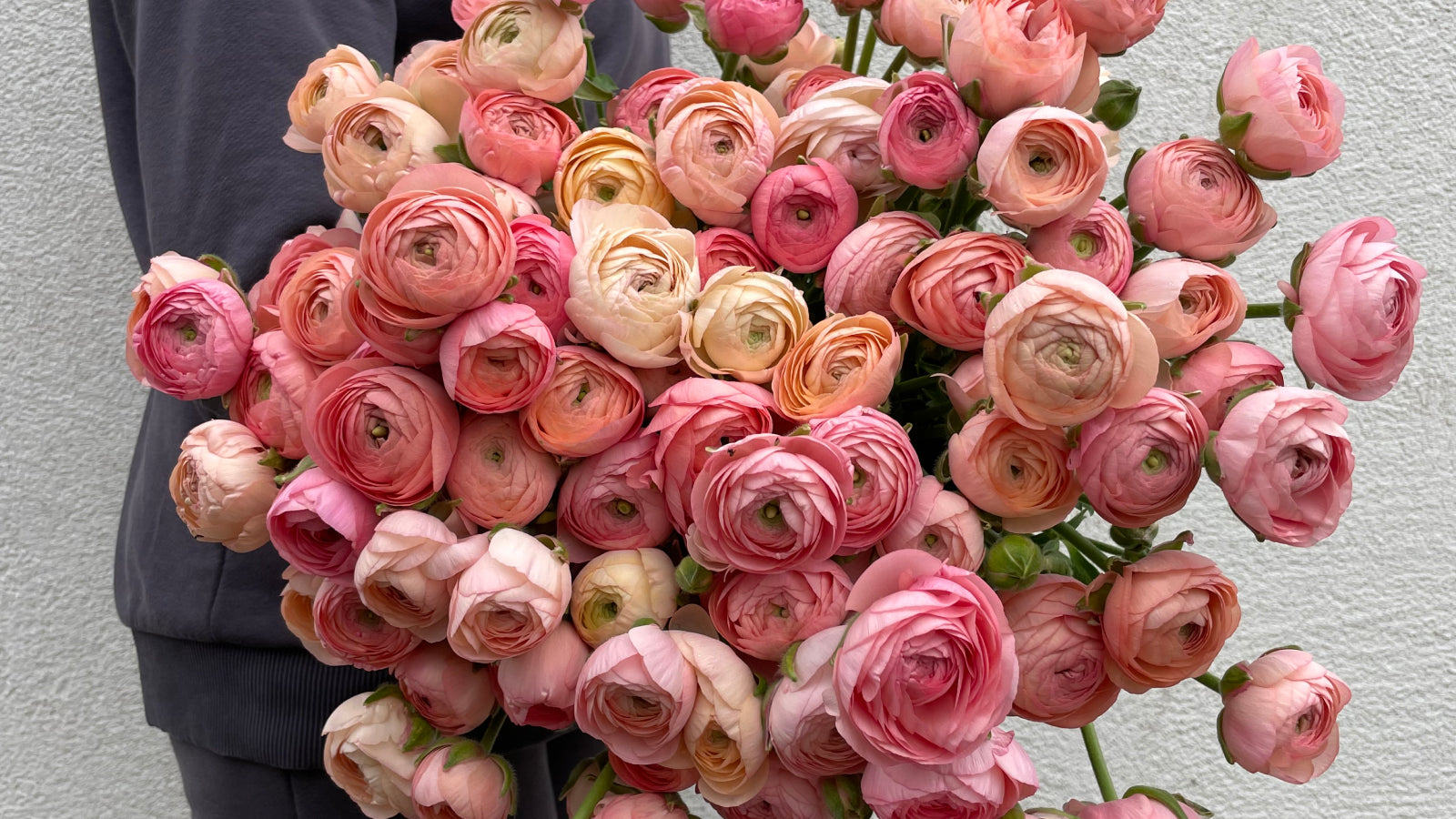In August 2023, we were able to visit the demonstration garden of dahlia breeder Jozef Weyts, located in the small town of Zonhoven in Belgium. Jozef has been growing and breeding dahlias for more than 40 years and has developed a series of Jowey varieties - more than 50 varieties and such celebrities as Jowey Winnie, Martina, Mirella, Linda, Nicky and others. The name of the Jowey series comes from the first 2 letters of the first name and the first 3 letters of the breeder’s surname – Jo+wey. This blog contains a very interesting story about Jozef and his journey in dahlias breeding, as well as a short interview with answers to the questions that most interested us.
Part 1. The story of Jozef and his journey in dahlias breeding.
I planted my first dahlias in 1979. We had just bought our house and an uncle gave me some tubers. I had never seen such things before. He told me to plant them, and flowers would come out. And indeed, in the summer there were red ball dahlias. At the time, I didn’t know anything about balls or cactuses or decoratives, whatever.
After a few years, I visited my sister and I saw that her neighbor had the same dahlias as us, but in yellow. I rang the door, and I asked the lady to swap some tubers in the fall, so I had two colors. Nice.
In the next summer, we were bicycling around and in the front garden I noticed some orange ball dahlias. So I stopped, knocked on the door and proposed again to swap some tubers. Now I had three colors. Even nicer.
Later, when I was visiting a garden center (for the first time), I saw many more dahlia varieties. I bought them all. Now I had a small collection of ball and pompom dahlias. I was quite proud of them.
One day, by coincidence, I read in the newspaper that there was a dahlia show in Bredene, on the Belgian seaside. I drove over there and at that moment a whole world opened up for me. I tried to contact the people who showed their flowers and was able to buy some varieties from them. Every year, I visited that garden again and bought some varieties from the exhibitors. This all happened in the eighties.
In the nineties, I started taking some seeds and tried to create some new varieties. I also started participating in the dahlia contest in Bredene. I started reading more and more about gardening and dahlias.
My first creation was a yellow cactus. I named it Super Nova, a newborn star. Unfortunately, that name existed already, so I decided to do what many growers do: use a prefix. As my name is Jozef Weyts, I took the first letters of my two names and created the prefix Jowey.
At a certain moment, I decided to focus on ball dahlias and got rid of cactus and decorative dahlias. In those years, I started to create varieties that are still doing well nowadays, such as Jowey Winnie.
Meanwhile, I got a computer and I did exactly like I did in those first years: I knocked on someone’s door, but now in the USA. I asked on the ADS website if somebody was interested in swapping tubers. I could send some European varieties to them, and they could send me some American varieties. This way I met Rick Peters, and every year since then we have been sending each other tubers. A nice cooperation and fine person.
At a certain moment, I saw a web page of a Dutch dahlia grower. I contacted him and asked if he was interested in the new varieties from my seedlings. Yes, he was, and a week later he was at my place. One of the dahlias he bought was Jowey Winnie, which was named after his wife Winnie.
Every year, he returned to see if I had something he could use. Sometimes he brought some friends along with him. This continues to this day: several Dutch growers come over here and have a look at my seedlings. It is thanks to them that my flowers have gone worldwide.
Meanwhile, I indirectly participated in shows in England, France and the USA.
I usually don’t do it myself, but local growers do it for me. These are the most noteworthy:
In 2006 I won the Premier Prix toutes catégories in Paris.
In 2007 I became Overseas Winner at the national in London.
In 2016 I won Best Variegated at the USA National.
Sometimes they ask me for judging dahlias on shows in Holland and
every now and then I write articles for a Flemish horticultural magazine.
Since 2013 I every year open my garden to the public on two Sundays.
I also have good contacts with several dahlia growers in Europe and the USA
When creating new varieties, I not just look to the flower, but also the strength of the stem, the position and formation of the bloom, and the overall appearance of the bush is important. One should be very strict when selecting seedlings.
Part 2. Interview.
1. What are the biggest challenges in dahlias breeding?
The challenge is to find the good matches, the good parents.
Every dahlia is a "bastard". If you cross two white dahlias, you cannot be sure that you will become only white dahlias. The same remarks regarding the shape and other properties. If you cross the two best ball dahlias, you are not sure to become good ball dahlias. Singles, decoratives, etc will appear.
2. How long does it take to breed a new variety? What are the main selection criteria?
If you are lucky, it needs only one season to breed a new variety. But once you have a good variety you must grow and observe it several years to see if it stays consistent. Does it produce cuttings well. Does it make good tubers. Is it healthy. Does it give many flowers.
The points yet mentioned are also selection criteria. But more important for me are the way the flower is built. The position of the flower on the stem. The strength of the stem. The form of the stem. The foliage and the way of growing of the bush. If a seedling will fulfill all these demands, then mostly it takes 3 years.
3. Is there feedback from the flower industry which you use to adjust your selection criteria?
Up to my opinion they give very few feedback. But sure, there is some. I learned that they want a variety that gives a lot of cuttings and is a good tuber maker. For a dahlia lover, as I am, those are criteria of second importance. For me the flower itself is the most important whether the industry wants it or not. I don't create new dahlias for the industry, just for myself. But if the industry wants them so much better. But as a matter of fact, during the past years, I more consider the desiderata of the industry. Sometimes they buy a flower although it is not my first choice. Sometimes I say to Rita: this seedling is not a perfect match for what I expect from a dahlia, but it is something peculiar and I think that commercial growers will like it.
4. What are the parents of Jowey Winnie? Is there a story behind creating this spectacular variety? How do you select the parental varieties to follow the Jowey ball form and stem pattern?
Jowey Winnie was one of my first creations. I was a novice at the time. We are talking about the nineties. I don't remember the parents, but I know that I only kept ball dahlias at that moment. The biggest chance to become a good ball dahlia is to keep only (the best) ball dahlias in your garden. I had my first computer at that time, and I contacted a Dutch commercial (Frank Van Nuland) grower telling him that I had created some new dahlias. Two days later he stood on my doorstep. He bought Winnie from me. This variety was named after his wife. I think Jowey Winnie is one of my best and surely one of my most worldwide spread varieties.
5. Do you work on educational projects? Do you collaborate with universities and labs?
No
6. How do you communicate inside the community of dahlia breeders?
After all those years I have several good dahlia connections throughout the dahlia community. I know growers/creators like me in Europe, in the USA. I know commercial growers in Europe (mostly Holland) and Europe.
7. What is your favorite variety?
Which of your children you love most? Did your mother tell you that she loved your brother more than you? If I must give an answer. Best ball dahlias: Shana and Anouschka and Winnie. Best decoratives: Louise, Nice (French city!), Rita
8. How do you see the future and perspectives of dahlia breeding? Especially in view of finishing dahlia genome sequencing when all traits (e.g. colour, form, shape, resistance etc) can be attributed to particular genes. Thus, making it available to create a desired variety in vitro?
I don't believe they will ever be successful. Too complicated to deal with a octoploid. But who am I?




1 commentaire
Leanne
Thanks for sharing this story! We love to learn who created beautiful Jowey dahlias!
Laisser un commentaire
Ce site est protégé par hCaptcha, et la Politique de confidentialité et les Conditions de service de hCaptcha s’appliquent.